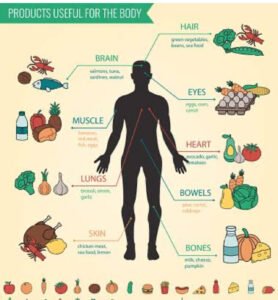
Introduction to Junk and Processed Foods
Junk food and processed food are terms that are increasingly prevalent in today’s dietary discussions, reflecting the evolving landscape of our eating habits. Junk food is typically characterized by its high levels of sugar, salt, and unhealthy fats, while being low in essential nutrients and fiber. This category includes snacks such as chips, sugary drinks, fast food, and candy, often providing little nutritional value. Processed foods, on the other hand, encompass a broader range of items that have undergone manufacturing processes. These can include simple alterations, such as canning or freezing, to more sophisticated transformations, resulting in ready-to-eat meals and packaged snacks.
The distinction between these categories often lies in their nutritional content and the degree of processing. While all junk foods are processed, not all processed foods qualify as junk; some can be nutritious alternatives, such as whole grain bread or frozen fruits. However, the increased reliance on junk and processed foods is a prominent feature of contemporary diets, often attributed to factors like convenience, affordability, and taste. In a fast-paced world, the allure of quick meal solutions and snacks that are readily accessible make these foods particularly appealing to consumers.
The popularity of junk and processed foods is bolstered by aggressive marketing strategies, highlighting their immediate gratification and palatable flavors, while often downplaying the potential health risks associated with their consumption. As lifestyles become busier, the tendency to gravitate towards these quick-fix options continues to rise, presenting concerns regarding nutritional balance in everyday diets. It is essential to understand these distinctions and the impact they can have on health as individuals navigate their food choices in the quest for a balanced dietary approach.
Understanding Healthy Foods

Healthy foods are defined by their inherent nutritional value and the presence of natural ingredients, which contribute significantly to overall well-being. Unlike junk food and processed food, which often contain high levels of sugar, unhealthy fats, and artificial additives, healthy foods provide essential nutrients necessary for the body’s optimal functioning. These foods are typically whole or minimally processed, retaining their natural state as much as possible, thereby preserving the vitamins, minerals, and antioxidants that are crucial for maintaining health.
When categorizing healthy foods, a focus is placed on fruits, vegetables, whole grains, lean proteins, and healthy fats. Fruits and vegetables are rich in vitamins and dietary fiber, while whole grains offer complex carbohydrates that serve as a sustainable energy source. Lean proteins, such as fish, poultry, legumes, and nuts, are essential for muscle repair and growth. Additionally, healthy fats, found in foods like avocados, olive oil, and fatty fish, play a vital role in brain health and hormone regulation. The majority of these nutritious components work synergistically to enhance bodily functions and boost the immune system.
Incorporating a variety of healthy foods into one’s diet is crucial for achieving balance. This diversity not only promotes a broad spectrum of nutrients but also helps in preventing chronic diseases. Studies have shown that individuals who engage in a diet rich in whole, minimally processed foods tend to have lower risks of conditions such as obesity, heart disease, and diabetes. Therefore, a conscious effort to prioritize these foods over junk food and processed items can yield significant long-term health benefits, encouraging a sustainable and nourishing lifestyle.
Nutritional Comparison: Junk Food vs Healthy Foods
The contrast between junk food and healthy foods can be stark, particularly regarding their nutritional content. Junk foods often include high levels of added sugars, unhealthy fats, and preservatives, while healthy foods typically feature whole, unprocessed ingredients. To illustrate, a popular junk food item, such as a regular serving of fries, can contain around 365 calories, 17 grams of fat, and 0.1 grams of protein, contributing minimal nutritional value. In contrast, a serving of baked sweet potatoes offers about 112 calories, 0.1 grams of fat, and 2 grams of protein, along with an abundance of vitamins and nutrients.
Junk foods are characterized by their high caloric densities, largely derived from refined carbohydrates and fats. For instance, a typical sugary soda can provide over 150 calories per can, all from sugar, with no significant nutritional benefit. Moreover, high sugar intake is linked to various health concerns like obesity and type 2 diabetes. In contrast, healthy foods like fruits, vegetables, and whole grains supply essential nutrients such as fiber, which is often neglected in junk food products. A serving of apples, for example, contains approximately 95 calories, with 4 grams of fiber and a plethora of vitamins and antioxidants that work to support overall health.
Health consequences from consuming a diet high in junk food can be severe. Regular intake can lead to increased risks of obesity, cardiovascular disease, and metabolic disorders, evidenced by numerous studies indicating a direct correlation between junk food consumption and chronic illnesses. Conversely, a diet rich in healthy foods is linked to lower risks of these health issues. The balance between these food types is crucial for maintaining optimal health and managing weight effectively. Establishing a more health-centric dietary approach can empower individuals to prevent serious health conditions and promote overall well-being.
The Psychology of Cravings: Why We Choose Junk Food
Cravings for junk food can often be traced back to a combination of psychological factors, including emotional states, marketing influences, and cultural conditioning. Many individuals find themselves reaching for high-calorie, low-nutrient foods during moments of stress or sadness. This behavior is rooted in the concept of emotional eating, where people consume comfort foods as a means of coping with their feelings. The immediate pleasure derived from indulging in sugary or fatty foods can create a temporary escape, reinforcing the cycle of seeking out such foods in times of emotional distress.
Moreover, the aggressive marketing tactics employed by food companies significantly contribute to our cravings. Advertisements often exploit emotional triggers and create associations between their products and moments of joy or reward. Bright packaging, catchy jingles, and strategic placement in stores all work together to entice consumers to choose these nutrient-poor options over healthier alternatives. Over time, this constant exposure can lead to a conditioned response, where the brain begins to associate happiness or satisfaction with the consumption of junk food.
Addiction-like behaviors can also stem from the ingredients found in many processed foods, particularly sugar and unhealthy fats. Research indicates that these components can activate the brain’s reward system in a manner similar to certain addictive substances. The interplay between dopamine releases and the consumption of these foods can create a cycle of craving and consumption that is difficult to break. Furthermore, cultural influences play a significant role, as social gatherings often center around food, with junk food commonly represented as a staple. This can perpetuate the desire for these foods, making it challenging to adopt a balanced diet.
Understanding these psychological aspects is crucial for individuals seeking to overcome cravings for junk food. By recognizing the triggers behind these desires, one can develop healthier coping mechanisms and create a more balanced approach to dietary choices.
The Impact of Processed Foods on Health

Processed foods have become a staple in many diets globally, offering convenience and accessibility. However, the health implications of regularly consuming these foods are a growing concern among nutritionists and health experts. Many processed foods are often loaded with preservatives, artificial ingredients, and added sugars, which can have detrimental effects on overall health. For instance, high sodium levels commonly found in processed meals can significantly contribute to the risk of hypertension, a condition that is increasingly prevalent in contemporary society.
The additives used in processed foods can also disrupt natural bodily functions. Some artificial ingredients may lead to digestive issues, as the body struggles to break down these substances, resulting in discomfort or allergies in sensitive individuals. Studies have linked consistent consumption of heavily processed foods to an increase in various chronic conditions, including obesity, heart disease, and diabetes. This alarming trend highlights the necessity for more awareness about the long-term health consequences associated with regular intake of processed food items.
Furthermore, it is essential to consider the environmental impact of processed food production. The industrial scale at which many processed foods are produced often leads to significant environmental degradation, including deforestation, water pollution, and increased greenhouse gas emissions. The agricultural practices used to cultivate ingredients for processing can exhaust natural resources and contribute to biodiversity loss. This concern extends the conversation beyond personal health, emphasizing the importance of sustainable eating practices. By shifting towards healthier alternatives, individuals can protect not only their health but also the environment. Making informed dietary choices becomes vital for fostering both personal wellness and ecological integrity.
Benefits of Healthy Eating
Adopting a healthier diet offers numerous benefits that extend beyond mere physical appearance. One of the most significant advantages of healthy eating is improved physical health. Consuming a balanced diet that includes a variety of fruits, vegetables, lean proteins, and whole grains supplies essential nutrients that the body needs for optimal functioning. This nutrient-rich diet can help reduce the risk of chronic diseases such as obesity, diabetes, and heart disease, which are often linked to poor dietary choices.
Furthermore, healthy eating positively impacts mental health. Emerging research indicates a strong correlation between diet and mental well-being, with studies suggesting that certain foods can enhance mood and cognitive function. Nutrient-dense foods help facilitate the release of neurotransmitters, which are crucial for maintaining emotional stability. Regular consumption of omega-3 fatty acids found in fish and antioxidants abundant in berries may even decrease symptoms of anxiety and depression.
In addition to physical and mental health benefits, a nutritious diet can lead to increased energy levels. Whole foods provide the sustained energy necessary to navigate daily tasks and challenges, as opposed to energy spikes and crashes often associated with junk food and processed options. By focusing on wholesome meals, individuals tend to experience improved endurance and overall productivity throughout the day.
Moreover, the connection between healthy eating and longevity is well-documented. Research shows that individuals who maintain a diet rich in whole foods experience a longer lifespan compared to those who consume high amounts of processed and junk food. The nutrients found in healthy foods play a crucial role in cell repair and immune function, which can promote a more extended and healthier life.
In conclusion, embracing a healthy diet is essential for anyone looking to enhance their overall well-being. Through improved physical health, better mental health, increased energy levels, and enhanced longevity, the advantages of making nutritious food choices are clear and substantial.
Tips for Reducing Junk Food Intake
Reducing junk food intake can significantly impact one’s overall health and well-being. By implementing deliberate strategies, individuals can make healthier choices without feeling deprived. One effective approach is meal planning, which encourages individuals to prepare balanced meals in advance. Spending time each week to create a meal plan can minimize impulsive decisions and reduce the chances of reaching for unhealthy options on busy days.
Another essential tip is to read food labels carefully. Understanding the nutritional content of foods helps consumers become more aware of hidden sugars, unhealthy fats, and preservatives often found in processed foods. Opting for products with shorter ingredient lists and identifiable components can contribute to better dietary choices.
Finding healthy snack alternatives is pivotal in the journey toward reducing junk food consumption. Instead of chips or candy, consider keeping a variety of nutritious snacks on hand, such as fresh fruits, nuts, or yogurt. These not only satisfy cravings but also provide essential nutrients, thus steering individuals away from less healthy options.
Cravings can be a significant challenge when trying to decrease junk food intake. Addressing them effectively may involve strategies such as mindful eating, which encourages savoring each bite and recognizing satiety cues. Additionally, trying to identify the emotional triggers behind cravings can be beneficial. Many snacks are consumed out of boredom or stress; thus, finding other activities or hobbies may help to mitigate this behavior.
Incorporating these practical tips into daily life can lead to a gradual reduction in junk food consumption. By focusing on meal planning, understanding food labels, substituting snacks, and managing cravings, individuals can cultivate a more balanced diet that promotes better health without feelings of restriction.
How to Create a Balanced Diet
Creating a balanced diet is fundamental to promoting overall health and well-being. It is essential to emphasize that a balanced diet does not necessitate rigidity; instead, it encourages moderation and informed choices that cater to individual preferences and lifestyles. To achieve this balance, one can incorporate a variety of healthy foods while still allowing for occasional indulgence.
Understanding portion sizes is a crucial aspect of creating a balanced diet. By familiarizing yourself with appropriate serving sizes, you can enjoy different types of food without overindulgence. For example, using smaller plates can help manage portion sizes, making it easier to serve appropriate amounts while still enjoying a diverse range of foods, including fruits, vegetables, whole grains, and lean proteins.
When dining out or eating at home, making nutritious choices can feel more straightforward than it may seem. At restaurants, one can opt for dishes that emphasize vegetables and whole grains while being mindful of fried or overly processed items. Many establishments now offer healthier alternatives to traditional menu options. Moreover, asking for dressings or sauces on the side can further control calorie intake and maintain flavor without sacrificing nutritional value.
At home, preparation can play a significant role in creating a balanced diet. Preparing meals in advance allows individuals to weigh their options—fetching ingredients from home rather than relying on fast food. Emphasizing cooking techniques like grilling, baking, or steaming can lead to healthier meals that are both satisfying and nutritious. Incorporating healthy snacks, such as nuts or yogurt, can also keep cravings at bay without compromising dietary quality.
Ultimately, developing a balanced diet is an ongoing journey. It involves experimenting with new recipes, discovering favorite healthy foods, and learning to enjoy moderation without depriving oneself. Establishing this balance fosters a sustainable approach to healthy eating, where satisfaction and nutrition coexist harmoniously.
Conclusion: Making Informed Dietary Choices
As we navigate the complexities of modern food choices, it becomes increasingly clear that understanding the implications of consuming junk food and processed food is essential for maintaining a healthy lifestyle. Making informed dietary choices is a critical step in balancing these often convenient food options with healthier alternatives. When individuals educate themselves about the nutritional content of their meals, they are empowered to make choices that align with their health goals.
Reflecting on your current diet is a fundamental first step toward positive change. Consider your usual food consumption patterns and identify areas where adjustments might enhance your overall well-being. Are there particular snacks or meals that predominantly consist of processed ingredients? Recognizing these patterns can serve as a starting point for transformation.
Gradual change is key in making sustainable dietary adjustments. Transitioning from a predominantly junk food-centric diet to one enriched with whole, healthy foods may appear daunting. However, small modifications—such as substituting a processed snack with a piece of fruit or incorporating more vegetables into your meals—can steadily steer you in the right direction. Progress may be slow, but celebrating these incremental victories is vital in fostering long-term commitment to healthier eating habits.
Awareness of food choices extends beyond mere nutritional content; it also encompasses understanding the impact of food sourcing, production, and culinary practices. By opting for locally-produced and minimally processed items whenever possible, consumers not only improve their health outcomes but also contribute positively to their local economies and the environment.
Ultimately, making informed dietary choices involves a thoughtful approach to food consumption. By reflecting on current habits, embracing gradual changes, and cultivating awareness, individuals can find a sustainable balance between indulgence and nourishment in their diets. The journey to enhanced health is ongoing, and with each decision, you are one step closer to a more balanced and enriching culinary experience.



Excellent information @ashrafshahin